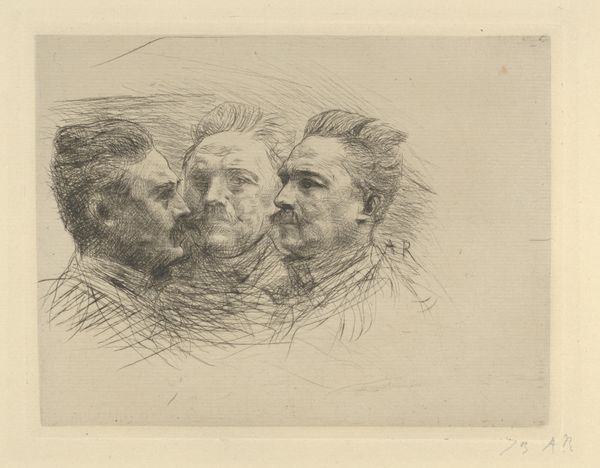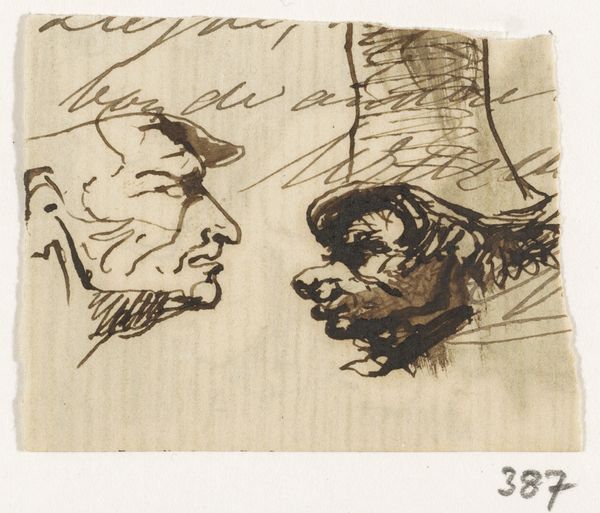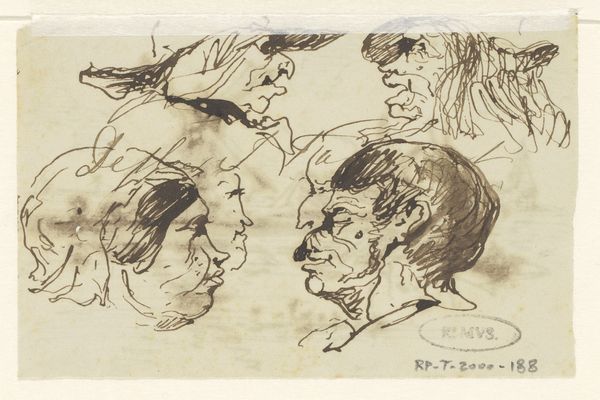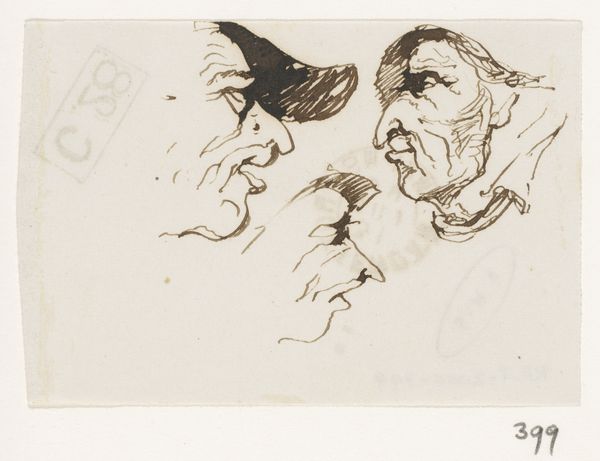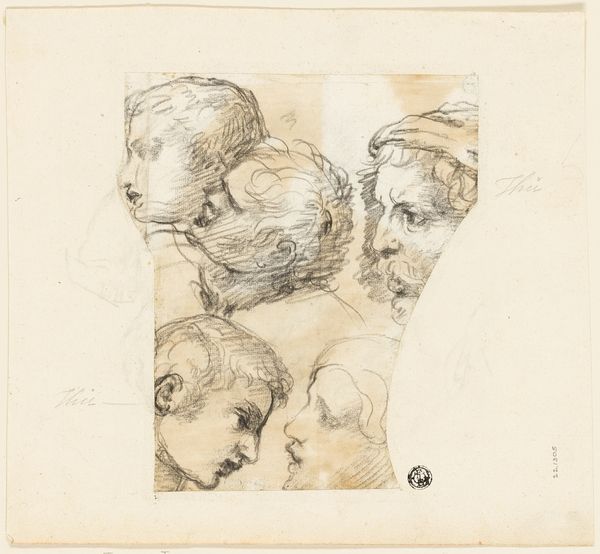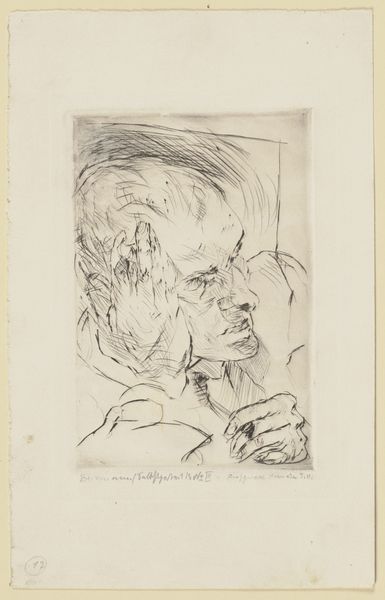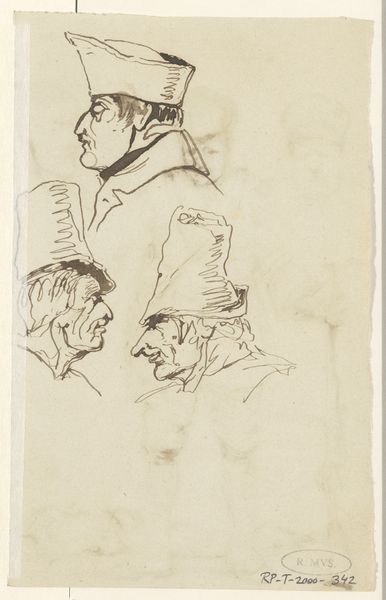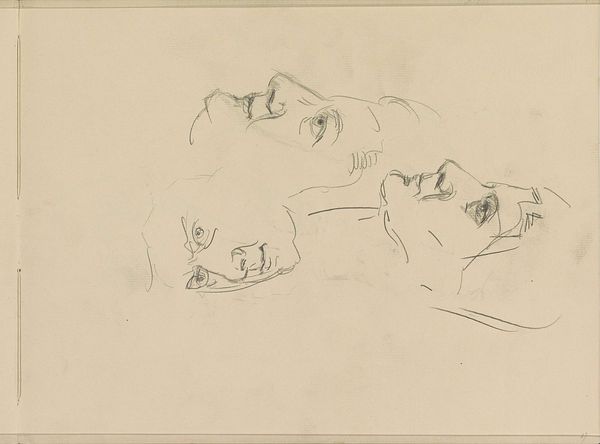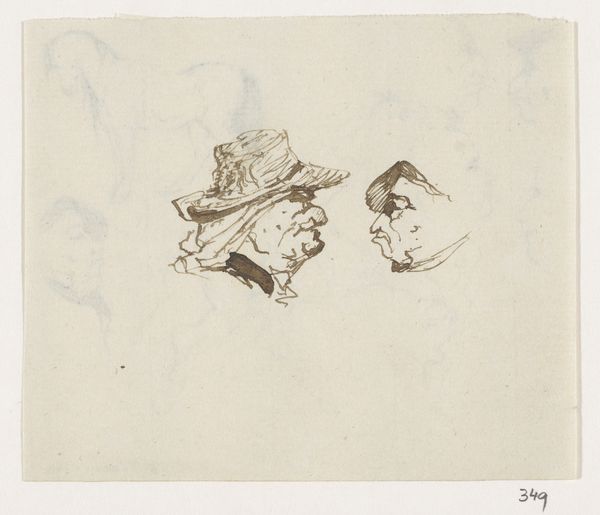
print, etching, pencil
#
portrait
# print
#
etching
#
pencil sketch
#
pencil
#
line
#
symbolism
Dimensions: plate: 15.9 × 20.1 cm (6 1/4 × 7 15/16 in.) sheet: 19.7 × 24.5 cm (7 3/4 × 9 5/8 in.)
Copyright: National Gallery of Art: CC0 1.0
Editor: Auguste Rodin's "Henri Becque," etched in 1885, presents us with a rather striking, almost ghostly portrait. It’s like looking at a memory, with these three heads emerging from a mist of lines. It’s compellingly intimate. What's your interpretation of this etching? Curator: Intimate, yes, that's a beautiful way to put it. It's almost as though we are eavesdropping on Becque's thoughts, those shadowy lines becoming the echoes of his inner world. And notice how Rodin uses line – frenetic, searching – to not just capture likeness but to convey a sense of interiority. Does it remind you of anything, the way the image seems to emerge from the nothingness? Editor: It's definitely evocative, the wispy lines almost dissolving into the background. I see some symbolic elements; however, they are ambiguous, right? Curator: Indeed. Rodin was fascinated with Symbolism. These weren't just portraits; they were explorations of the human condition, of the ephemeral nature of existence itself. Perhaps the duplication hints at the multiple facets within Becque's personality or the various perspectives through which he's viewed. You know, it almost feels like he's experimenting with capturing a soul, doesn't it? Editor: Definitely, more than just an accurate depiction. I get that sense of him reaching for something deeper, something almost beyond definition. It makes the work so much more interesting than a straightforward portrait. Curator: Precisely! Rodin was chasing after something raw, real, and true. And sometimes, the sketch, the unfinished, reveals more than any polished sculpture ever could. What a thought! It reminds me, actually, of the artistic process in its entirety… Editor: It makes you wonder what other secrets those lines are hiding, and I can't help but feel that the more you know about the subject, the more you find in those almost random lines. Curator: What I've realized through your questions is that those imperfections become the art's strengths, drawing us into its mystique.
Comments
No comments
Be the first to comment and join the conversation on the ultimate creative platform.
